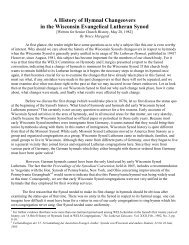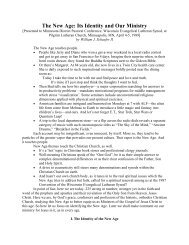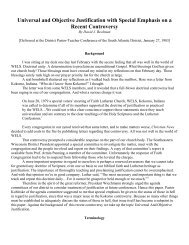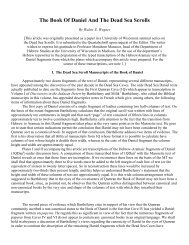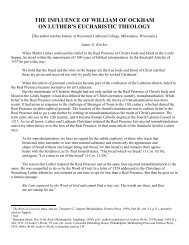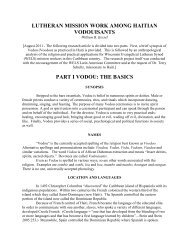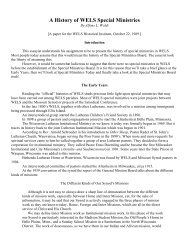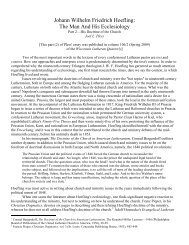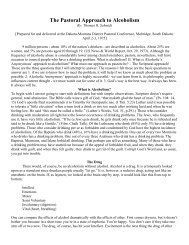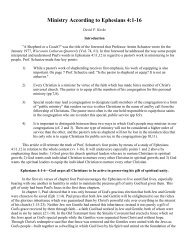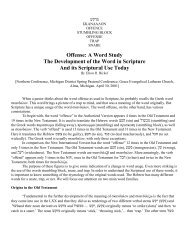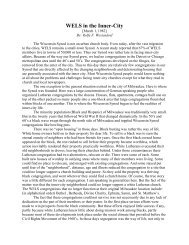Strangers to Sisters - Wisconsin Lutheran Seminary Library: Essays
Strangers to Sisters - Wisconsin Lutheran Seminary Library: Essays
Strangers to Sisters - Wisconsin Lutheran Seminary Library: Essays
You also want an ePaper? Increase the reach of your titles
YUMPU automatically turns print PDFs into web optimized ePapers that Google loves.
The Wauwa<strong>to</strong>sa men, Koehler in particular, made it a point <strong>to</strong> s<strong>to</strong>p using the term<br />
“analogy of faith.” There is a discussion of the his<strong>to</strong>ric usage of the analogy of faith, but<br />
simpler terminology has been developed <strong>to</strong> teach the same truth without the confusing<br />
exegetical and doctrinal baggage that has attached itself <strong>to</strong> the term. In contrast, the ELS,<br />
while quick <strong>to</strong> recognize the criticisms of the Wauwa<strong>to</strong>sa men and, for the most part,<br />
accept their judgments as sound warnings, continue <strong>to</strong> teach and employ the term in its<br />
classical <strong>Lutheran</strong> form. Zimmerman, for instance, while disagreeing with Koehler’s<br />
assertion that “faith” is always used in a subjective sense in the New Testament, goes on<br />
<strong>to</strong> quote Koehler at length regarding the pitfalls of the term as well as its proper sense. 116<br />
Similarly, Juul Madson, while also expressing reservations about the use of the analogy<br />
of faith as a hermeneutical principle, even going so far as defending Koehler’s<br />
assessment of the problems that developed with the application of this term still sees a<br />
dogmatic value in its classical <strong>Lutheran</strong> usage. 117<br />
This continued use of the “analogy of faith” as a hermeneutical principle in the<br />
ELS underscores the Norwegian desire <strong>to</strong> maintain a living connection <strong>to</strong> the faithful<br />
confessors of the past. They are wary of “new” expressions and loath <strong>to</strong> discard anything<br />
“old” until it has been shown <strong>to</strong> be a danger <strong>to</strong> the church. The Norwegian Hermeneutic<br />
therefore, is attuned <strong>to</strong> “different” or “new” language and insists on testing it before<br />
adoption, whereas the Wauwa<strong>to</strong>sa method is less concerned with the his<strong>to</strong>rical expression<br />
as it is with the substance of what is being expressed.<br />
In the estimation of this writer, it has been the jarring sound of an unfamiliar<br />
accent that has been the cause of most, if not all, misunderstandings between the two<br />
116 Zimmerman, Biblical Hermeneutics, 59.<br />
117 Madson, The Analogy of Faith, 17.<br />
66



